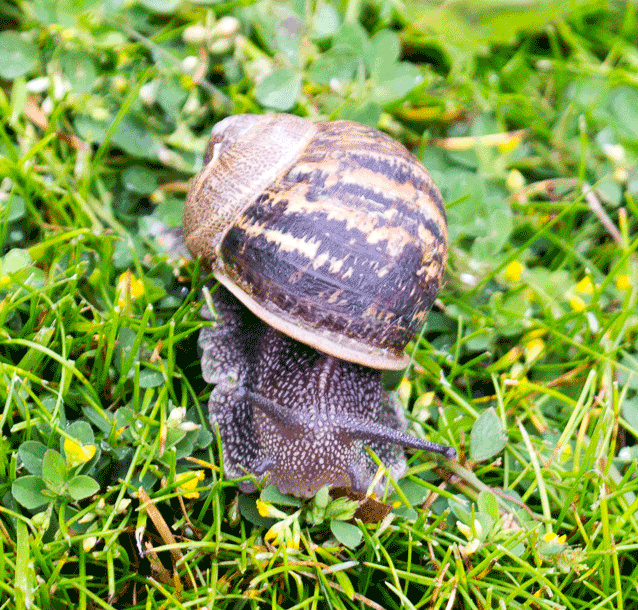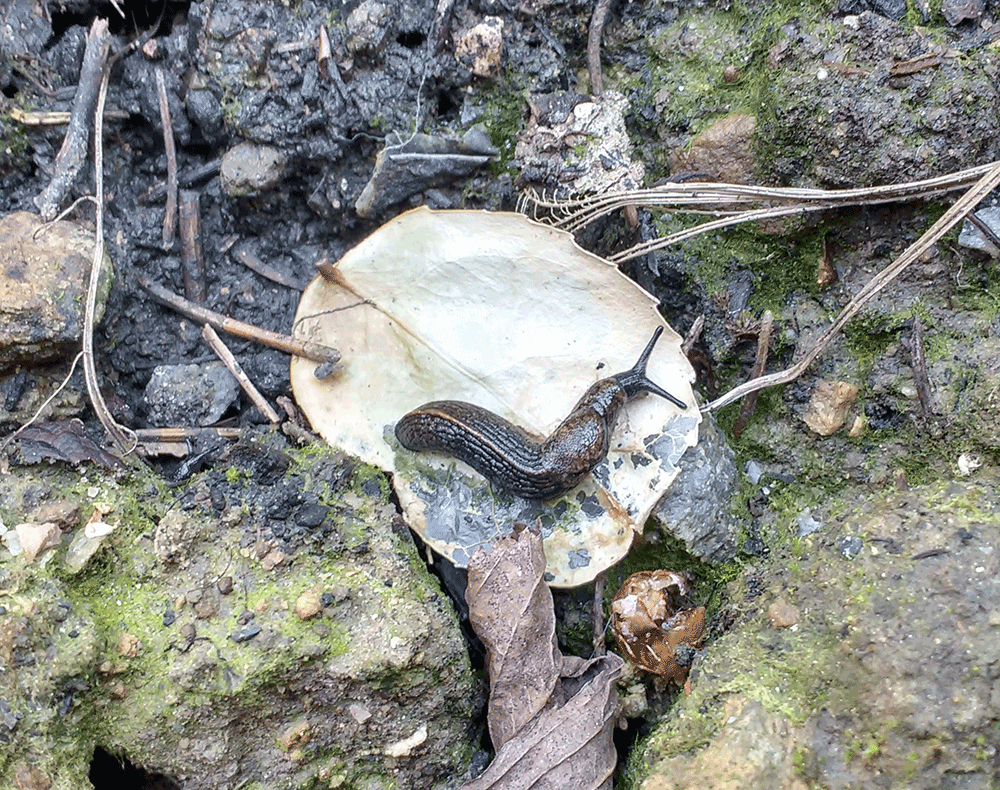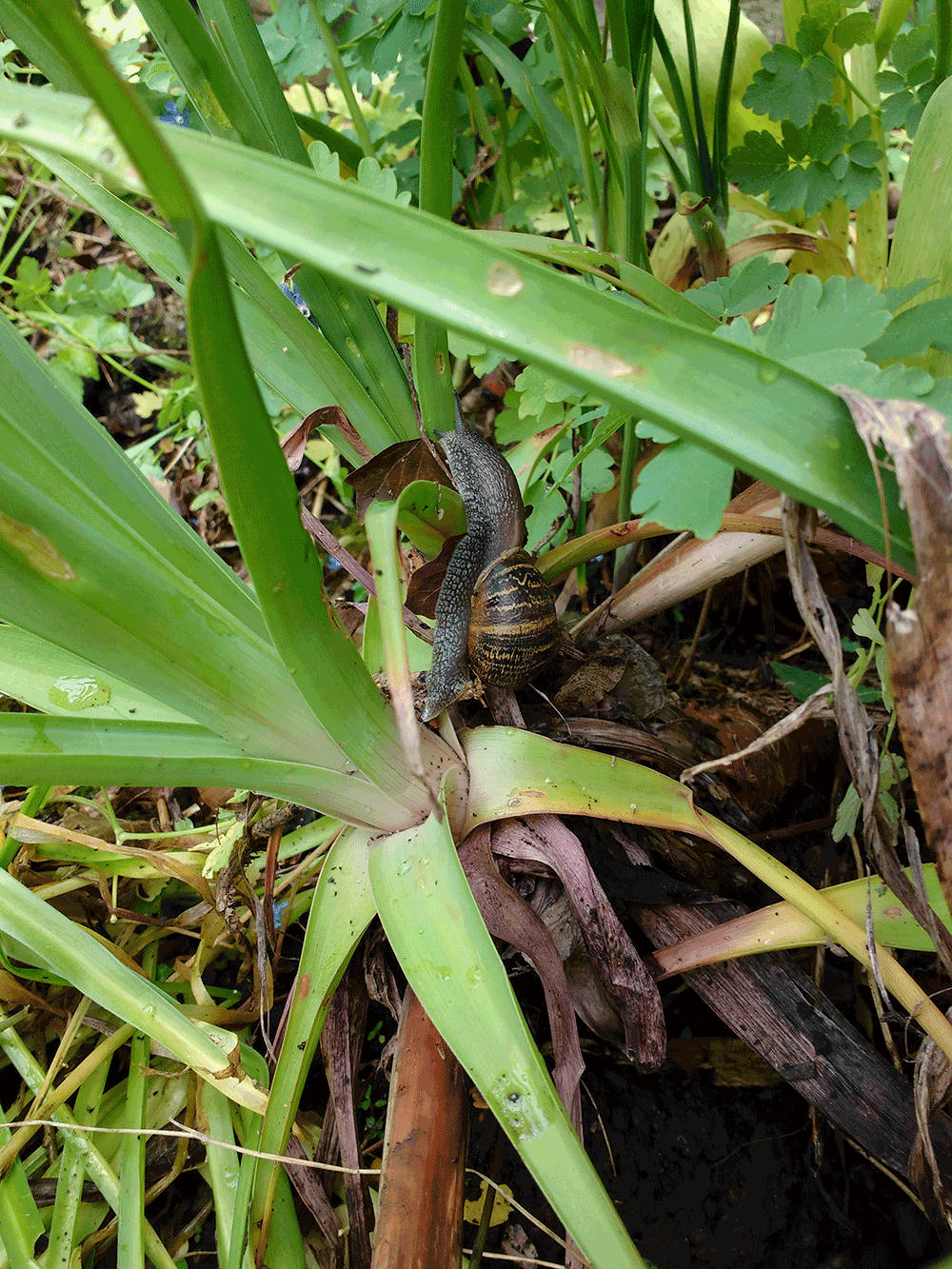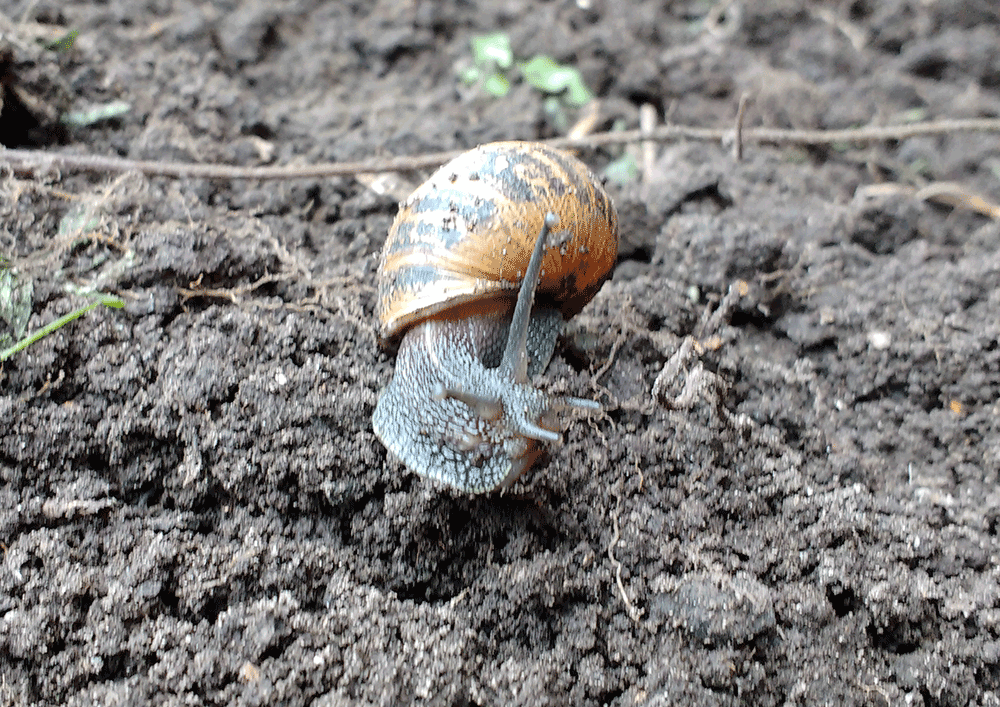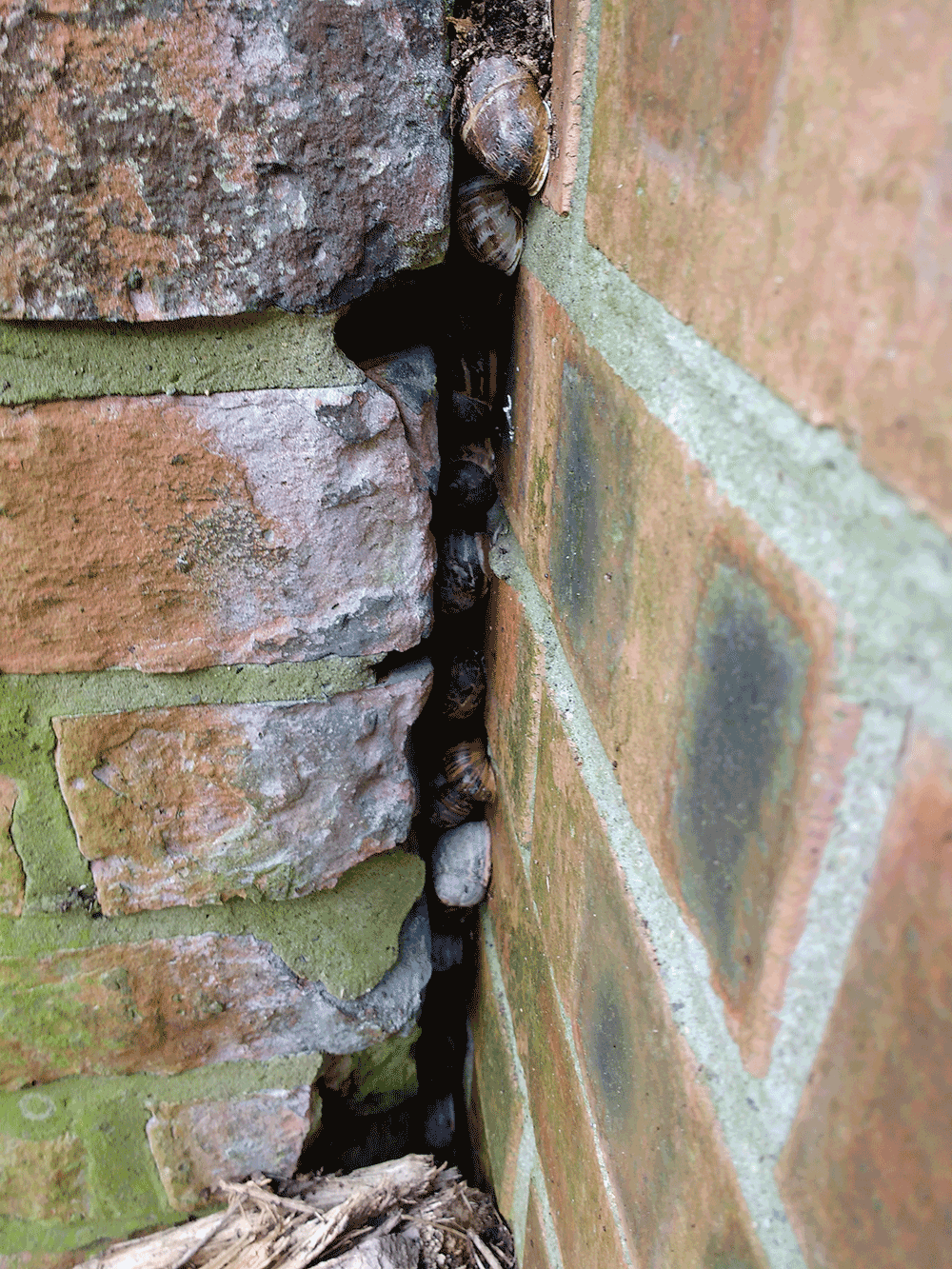If a man can write a better book, preach a better sermon, or make a better mousetrap than his neighbor, though he build his house in the woods, the world will make a beaten path to his door. Ralph Waldo Emerson
The battle between gardener and mollusc seems a perennial one and I have lost count of the times I have been sagely told such and such will stop your hosta plants being eaten. The problem of slug and snail damage is well known to all gardeners with the chewed leaves, trails of slime and clusters of white eggs. The taxonomy of slugs and snails is complex and at present unclear but it is believed that slugs are snails which have lost there shells, a process that has occurred on a number of separate occasions. They are though all well adapted to the environments we create in our gardens, good climbers and capable of bulking up there numbers rapidly if conditions suit them.
Below I have listed the techniques that have been tried to control the damage to plants by slugs and snails, known collectively as molluscs, there advantages and limitations.
Physical controls
At its simplest this involves picking the creatures up and disposing of them. On a satisfaction scale this ranks very highly, especially is the method of disposal is a hammer. The problem is you are going to have to spend a lot of time and effort if this is to be effective. Copper band either around plants or their pots has many advocates and in laboratory conditions the pests are deterred by copper but this option is expensive and attempts to demonstrate it’s effectiveness in field conditions have not been successful. Raising the plants up above ground level has also been up forward but I’ve seen slugs and snails 3 metres up walls so you have to ask just how high up are you going to raise the plants.
Slug traps are very popular and are used in research to monitor the relative density of slugs in a location but there is little evidence that they can actually control slugs in the garden beyond a sense of satisfaction that the gardener has caught some. Topdressings are also very popular but there is little proof that they actually work and some can even make the situation worse!
Cultural controls
Slugs and snails like dark damp places and anything which makes the garden less appealing to them is going to help, the problem is that what suits them also suits our gardens. It has been recommended that watering in the morning, so the soil surface can dry out quickly, will make condition harder for the pests but watering at night is a more efficient use of water as the soil doesn’t dry out as quickly and is available to the plants. Removing hiding places for them makes it harder for them, but in practice they will just find somewhere else to hide. It is suggested growing plants the slugs and snails don’t find as palatable is on option, however this is going to deny you of any of the most desirable plants.
Slugs and snails have many natural predictors including amphibians, hedgehogs and a number of native birds. Equally the pests have evolved ways to minimise losses to predation leading to a natural balance which ensures everything survives but limits how effected they are as a means of pest control.
Biological controls
At present there is a great deal of interest in control using a naturally occurring nematode that prays on slugs. The nematodes are applied by mixing them with water and watering them onto the soil as they are natural live in the soil. This means that the control is not effected by rain which is an advantage over many other controls. Unfortunately, this also causes their first limitation as while slugs live in the soil snails do not meaning that although they can control slugs they provide little if any control of snails. They are also limited by the fact to effectively control the pest to a level gardeners would want they population of the nematodes has to be higher than would naturally occur. This is because like all biological controls there are natural limits to their effectiveness as any predator that even comes close to overwhelming its pray will lead to the prays extinction and therefore will follow it there. To achieve this the treatment needs to be reapplied every 6 weeks, but being a live product its shelf live is very limited and the manufactures recommend storing the product for a maximum of 4 weeks in a refrigerator. At typically £12.37 per 40m2 and repeated applications need throughout the growing season this becomes an expensive option.
There is also the danger of unintended consequences when introducing a predictor into an environment it is not native to and so its use in countries it is not native is unlikely to be licensed.
Chemical controls
Only three chemicals are presently licensed for the control of slugs and snails and one of them is only for professional use in potatoes and is about to be withdrawn so it can be ignored. The remaining two are metaldehyde and ferric (III) phosphate.
Metaldehyde
This has long been the main chemical for the control of slugs and snail. It is though, very toxic and pressure is growing for its restriction and even withdrawal. The chemical is applied as pellets containing a bait the slugs and snails will eat and sometimes additives to make the pellets less palatable to other animals. The pellets are broken down by rain meaning they have to be reapplied after rain. the conditions which suit the pests!
Ferric (III) phosphate
This has become increasingly popular as a more environmentally friendly alternative to metaldehyde. The problem is that on it’s own it does not give very good control and only when mixed with EDTA (ethylene-diamine-tetraacetic acid) does it give control comparable to metaldehyde. The problem is that although both these chemicals are not particularly toxic on their own when combined they are and there is a growing body of reports of pets and wildlife being poisoned by them. There is the added problem as there relatively new adoption as a pesticide means there is limited understanding of safety.
The product is applied as granules in the same way as metaldehyde with the same limitations.
Conclusion
At present most people are going to have to rely on chemical control if you hope to get effective control of slugs and snails in the garden. Metaldehyde has know problems of toxicity and while at present 24 of the 53 products licensed for use by UK amateur garden is based on this chemical it is likely that the number of these products will fall. Ferric (III) phosphate has been marketed as a more environmentally friendly alternative and can be a good method of control but it may yet turn out to be little more environmentally friendly than metaldehyde.


